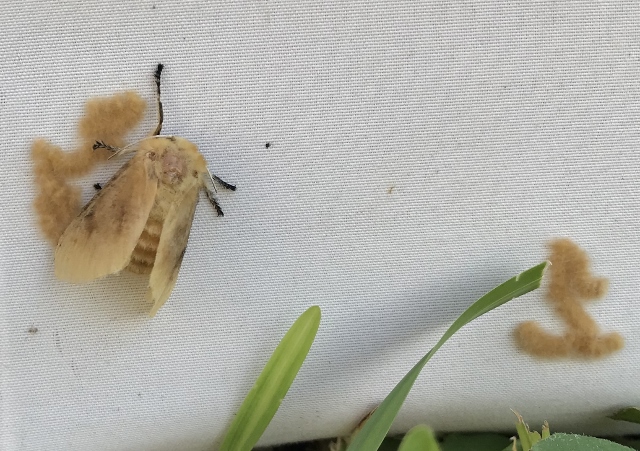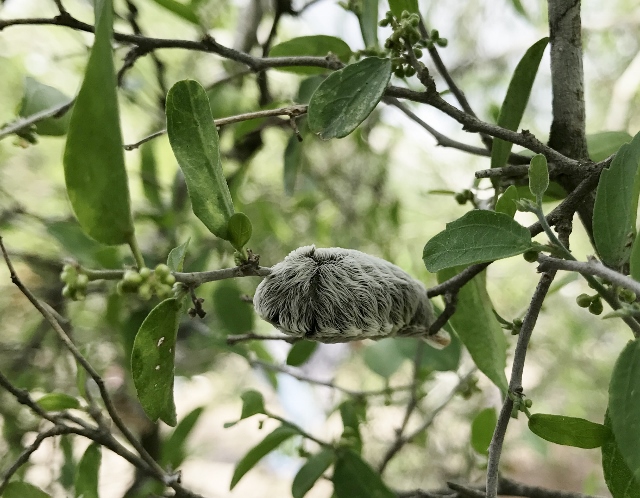Story and photos by Anita Westervelt, Texas Master Naturalist

Some moths and butterflies are still laying eggs, and in six to 10 days, those eggs will hatch and tiny caterpillars will be on the move.
Moth and butterfly caterpillars grow through about five instar stages. After the final stage, moth caterpillars form a cocoon while butterfly caterpillars form a chrysalis, before emerging into their adult forms at a later date.
It is fairly common to see caterpillars marching along the pavement, over lawns, or inching up the side of a building as they travel to a suitable place to form cocoon or chrysalis.
However fun it might seem to pick up a cute, fuzzy caterpillar for a closer look, beware — if a caterpillar looks furry, fluffy or fuzzy, it probably stings. Not all stings are equal though, and the harshest is from the southern flannel moth caterpillar, which can deliver an intense wallop with excruciating pain. This caterpillar has a special name: it is known as an asp or puss caterpillar. Its sting can develop into a severe rash with volcano-like welts in the shape of a grid that matches the pattern of venomous spines on the underside of the asp. The sting is an involuntary defense when a predator, or human, plucks the asp from its habitat.


In the Deep South, southern flannel moths may be starting to lay eggs for a third brood of the year. Once the eggs hatch, the caterpillar is yellow with smooth skin during its first instar. However, it quickly turns into a unique and easily recognizable but treacherous shape. The asp is hairy, resembling a miniature mop head with a tail tuft about one and a half inches in length, in colors from gray to grayish-brown or gray with orange highlights.
Interestingly, during the last week of September a southern flannel moth laid eggs on the corner of a moth sheet. An odd behavior that may have resulted from the moth being attracted to the black light shining on the sheet. The eggs will need to be observed and the caterpillars moved to appropriate plants. (For information about moth-attracting set-ups, please visit https://www.stbctmn.org/post/mothing.)
The southern flannel moth is small. It’s about one inch in length and is a pretty golden shade of yellow-orange; it is furry. Although the caterpillars pack a powerful sting, once emerged as an adult, they are no longer venomous. The adult flannel moth does not sting nor bite.
The female southern flannel moth lays about 100 eggs in curved rows on leaves of specific host plants. The rows are fluffy looking and the same golden color as the moth because they are covered with hair from the underside of her body. The tiny rice-shaped translucent yellow eggs are lined up in rows in the fur.
Flannel moth caterpillars feed on a variety of plants from different plant families. Locally, they feed on deciduous trees — trees that shed leaves annually — like ash, hackberry, honey mesquite, retama, cedar elm, pecan, persimmon, tenaza, tepeguaje and some oak trees.